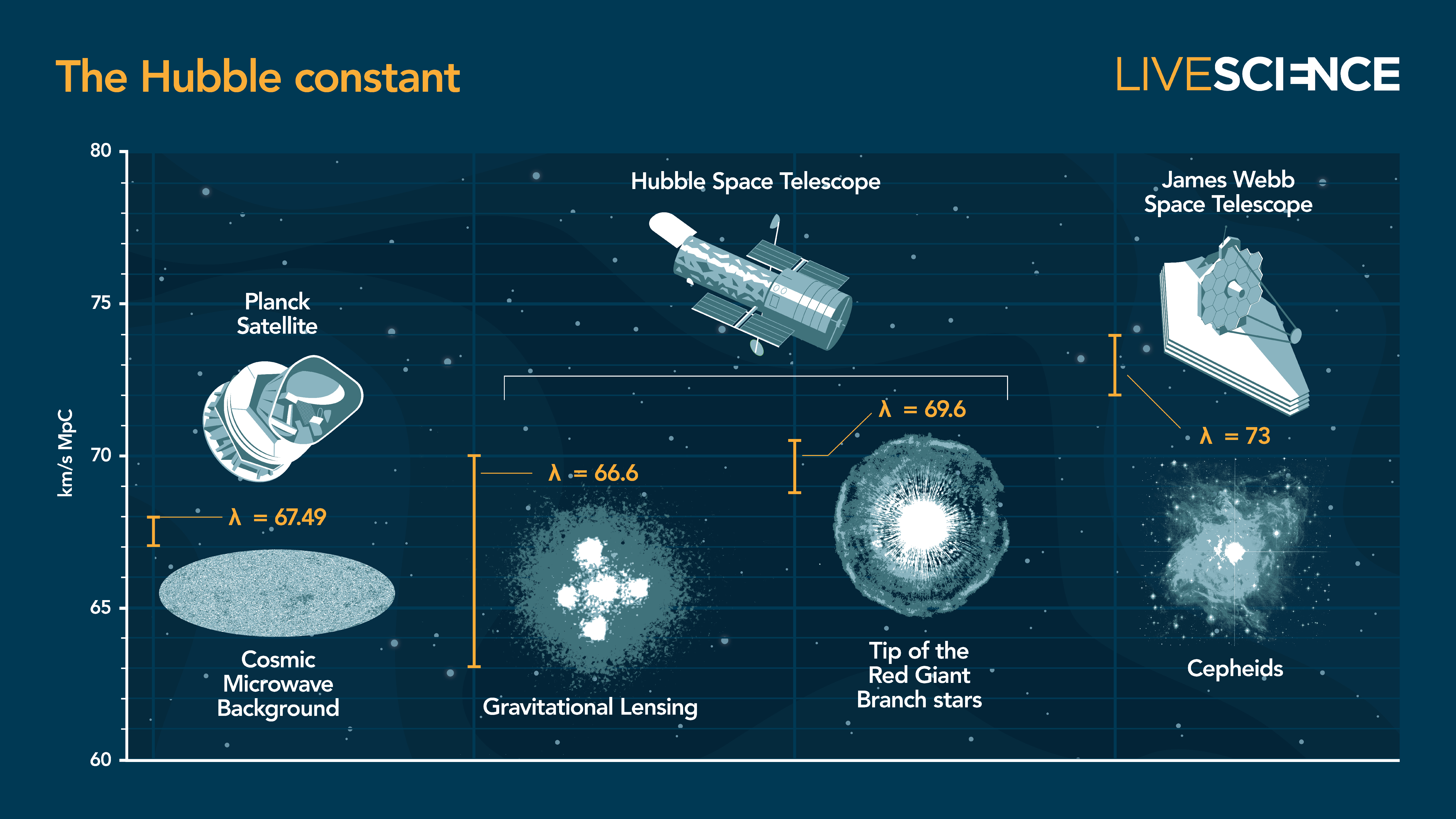New observations made by the James Webb Space Telescope (JWST) have further cemented one of the most bizarre observations in all of physics — that the universe expanded at different speeds across varying stages of its lifetime.
The conundrum, referred to as the Hubble tension, has fueled a debate among astronomers that could alter or even upend the field altogether.
In 2019, measurements by the Hubble Space Telescope confirmed the problem was real. Then in 2023 and 2024, even more precise measurements from JWST appeared to confirm the discrepancy.
Now, further measurements have used the largest sample of JWST data collected over its first two years in space to further cement the problem. The new physics that could answer the mystery remains unclear but, as the researchers outline in a paper published Dec. 9 in the The Astrophysical Journal, the tension is not going anywhere.
“The more work we do the more it is apparent that the cause is something much more interesting than a telescope flaw. Rather it appears to be a feature in the universe,” lead study author and Nobel laureate Adam Riess, professor of physics and astronomy at Johns Hopkins University, told Live Science. “[The] next steps are many. More data on many fronts and new ideas are needed.”
Related: After 2 years in space, the James Webb telescope has broken cosmology. Can it be fixed?
There are two gold-standard methods for figuring out the Hubble constant, the value that quantifies the speed of the universe’s expansion. The first is taken by measuring tiny fluctuations in the cosmic microwave background — an ancient snapshot of the universe’s first light produced just 380,000 years after the Big Bang.
After mapping out this microwave hiss using the European Space Agency’s Planck satellite, cosmologists inferred a Hubble constant of roughly 46,200 mph per million light-years, or roughly 67 kilometers per second per megaparsec (km/s/Mpc). This, alongside other measurements of the early universe, aligned with theoretical predictions.
The second method operates at closer distances and in the universe’s later life using pulsating stars called Cepheid variables. Cepheid stars are slowly dying, and their outer layers of helium gas grow and shrink as they absorb and release the star’s radiation, making them periodically flicker like distant signal lamps.
As Cepheids get brighter, they pulsate more slowly, enabling astronomers to measure the stars’ intrinsic brightness. By comparing this brightness to their observed brightness, astronomers can chain Cepheids into a “cosmic distance ladder” to peer ever deeper into the universe’s past.

With this ladder in place, and after anchoring the Cepheids’ brightnesses to explosions from Type Ia supernovae, astronomers can find a precise number for the universe’s expansion speed from how the flickering stars’ light has been stretched out, or redshifted. The Hubble constant returned by this method is around 73 km/s/Mpc: a value far outside of the error range of the Planck measurements.
Related: ‘It could be profound’: How astronomer Wendy Freedman is trying to fix the universe
Astronomers have offered various explanations for the cause of this disagreement, with some attempting to tease out the possibility of systematic error within the results. Meanwhile, Riess and his team have been cementing the tension with increasingly precise and wider-encompassing studies.
This new study is yet another link in this chain. Covering roughly a third of the sample size of the 2019 Hubble study, the new analysis used JWST to measure the sample’s Cepheid distances to within 2% accuracy — a big improvement on Hubble’s precision of 8-9%.
Cross-checking these results with other distance-measuring stars such as carbon rich stars and bright red giants returned a value of 72.6 km/s/Mpc, making it nearly identical to Hubble’s original measurement.
Exactly what could be causing the strange mismatch is unclear (“I wish I knew,” Riess told Live Science). But speculation is rife among astronomers.
One possibility is “something missing in our understanding of the early universe, such as a new component of matter — early dark energy [the mysterious phenomenon driving cosmic expansion] — that gave the universe an unexpected kick after the big bang,” Marc Kamionkowski, a cosmologist at Johns Hopkins University who helped calculate the Hubble constant and who was not involved in the study, said in a statement. “And there are other ideas, like funny dark matter properties, exotic particles, changing electron mass, or primordial magnetic fields that may do the trick. Theorists have license to get pretty creative.”
